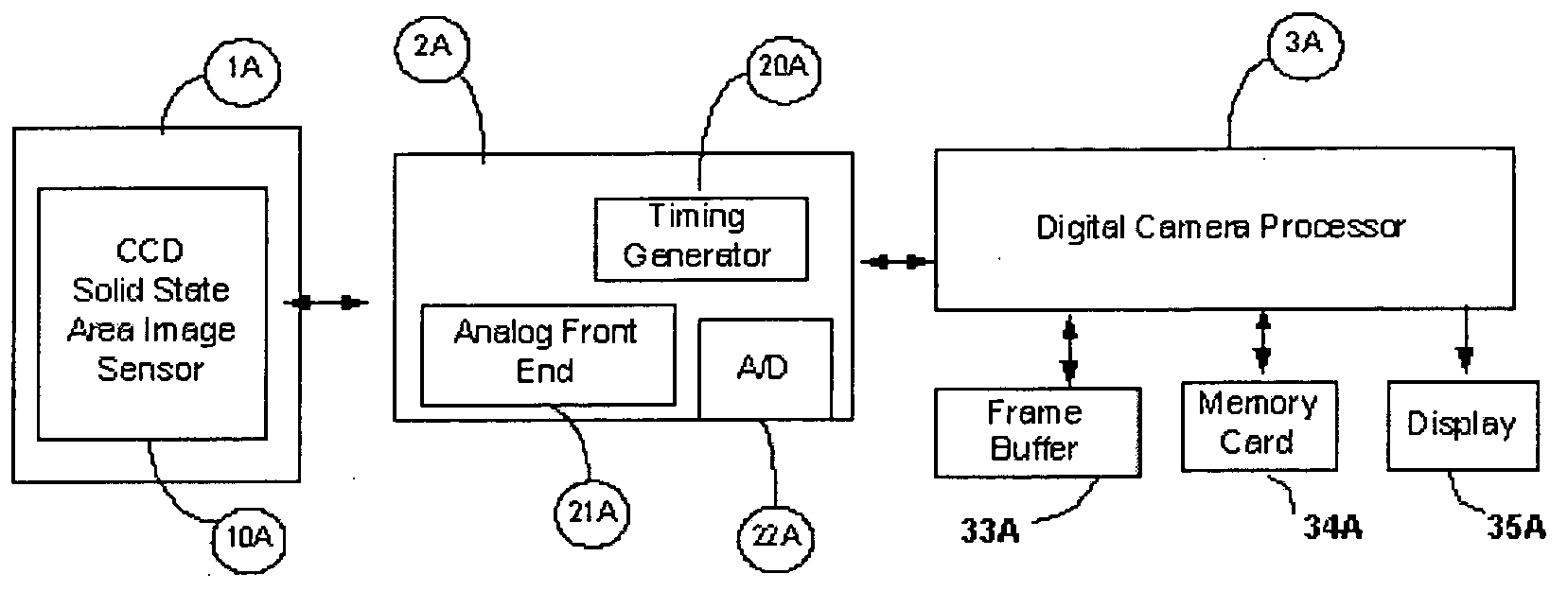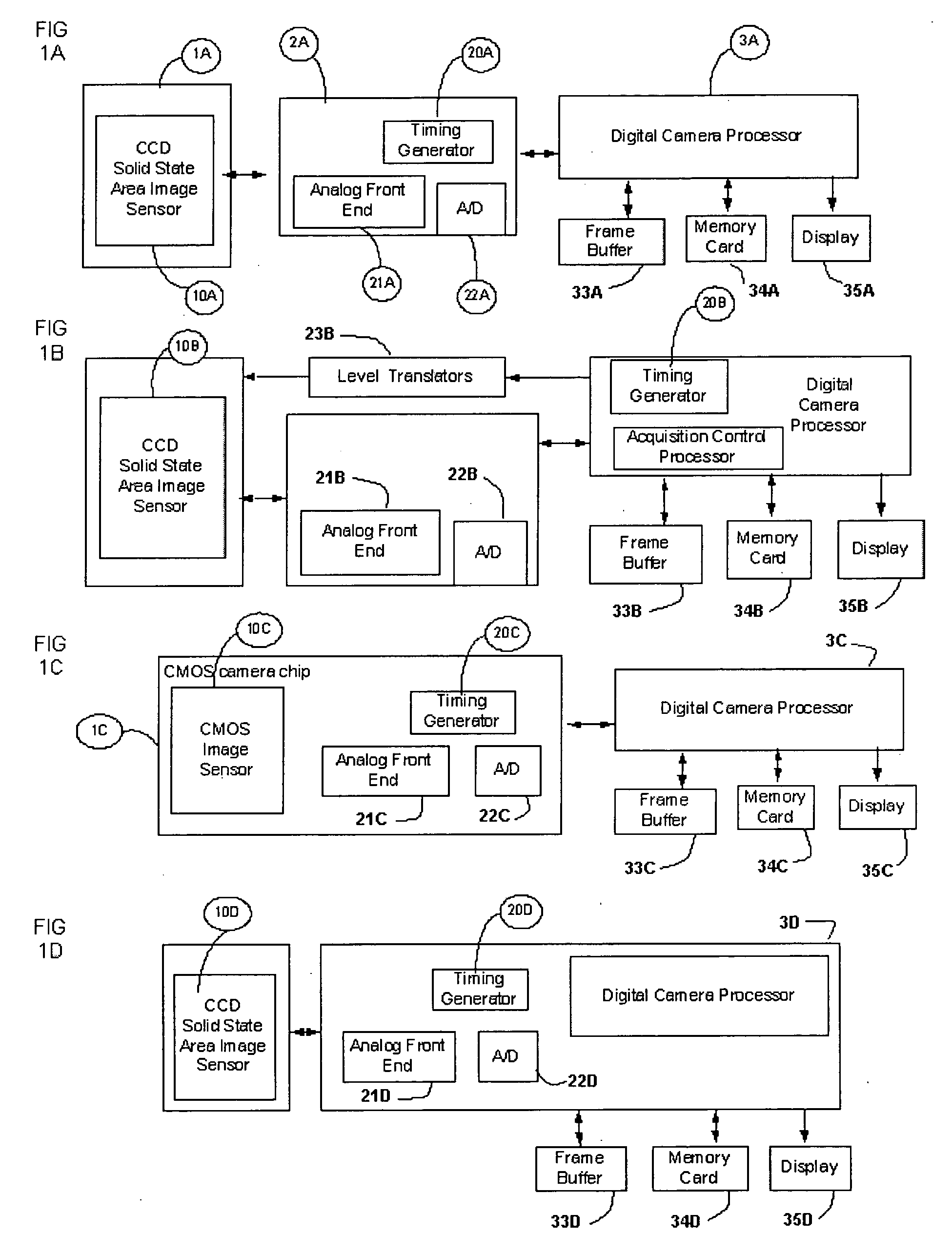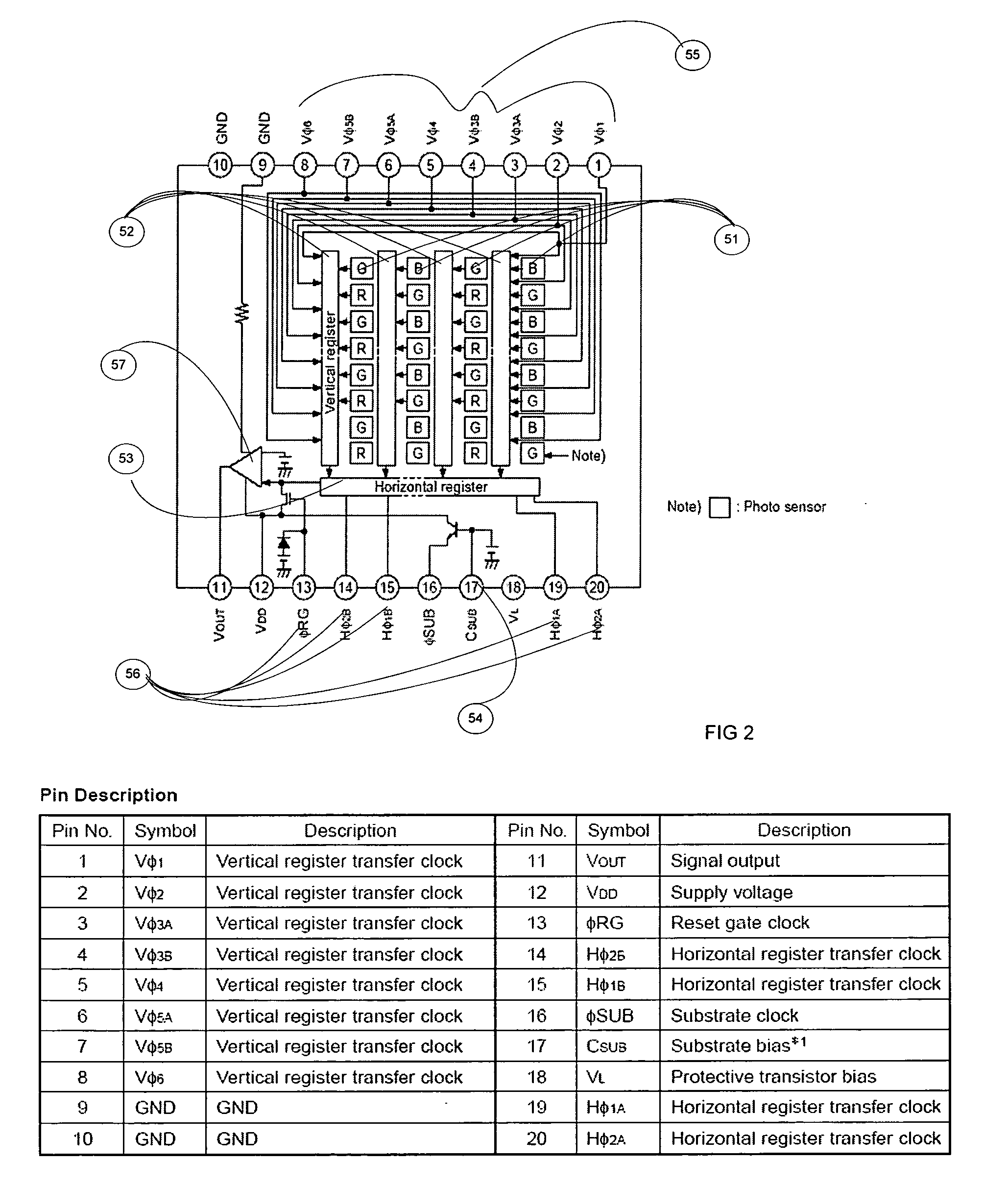Solid-state area image sensor readout methods for illuminat discrimination and automatic white balance in digital cameras
a digital camera and readout method technology, applied in the field of source light determination, can solve the problems of not being able to accurately reproduce the colored photographic scene of the human observer, not being able to accept more than an acceptable facsimile, and undesirable green or pink casts, etc., to achieve accurate and reliable through the lens illumination discrimination, accurate and reliable analysis of the highest harmonic magnitude, and the effect of reducing the number of errors
- Summary
- Abstract
- Description
- Claims
- Application Information
AI Technical Summary
Benefits of technology
Problems solved by technology
Method used
Image
Examples
first embodiment
[0089]FIG. 5 is a diagram illustrating one embodiment of the white point decision-making process. FIG. 5 further illustrates the white point decision-making process 65 from FIG. 4 in more detail. In a first embodiment, white point decision-making process 65 uses a scene illuminant classifier 80, such as is described in the aforementioned Shroyer, U.S. Pat. No. 4,220,412, to further discriminate the scene illuminant into a single or mixed illuminant type. The determined illuminant type from scene illuminant classifier 80, and information regarding strobe-firing 69 are used to select calibrated values 81a for that known illuminant or mixture of known illuminants. The appropriate correction values 66, for that determined illuminant type is then applied to each R, G, and B pixel in the photographed scene.
[0090]FIG. 3A is a diagram illustrating a first embodiment of the regions of the solid-state area sensor, which may be used for temporal sampling of the scene illuminant.
[0091] In an a...
second embodiment
[0092]FIG. 3B is a diagram illustrating the regions of the solid-state area sensor, which may be used for temporal sampling of the scene illuminant.
[0093] While the preferred embodiment and various alternative embodiments of the invention have been disclosed and described in detail herein, it may be apparent to those skilled in the art that various changes in form and detail may be made therein without departing from the spirit and scope thereof.
[0094] For example, while the present invention discloses sampling a portion of image data from an area of the image sensor for white correction, it is possible, within the spirit and scope of the present invention to sample any portion, including all of, the area of the image sensor. All the photocells may be “binned” together into a single average sample for white balance correction purposes.
PUM
 Login to View More
Login to View More Abstract
Description
Claims
Application Information
 Login to View More
Login to View More - R&D
- Intellectual Property
- Life Sciences
- Materials
- Tech Scout
- Unparalleled Data Quality
- Higher Quality Content
- 60% Fewer Hallucinations
Browse by: Latest US Patents, China's latest patents, Technical Efficacy Thesaurus, Application Domain, Technology Topic, Popular Technical Reports.
© 2025 PatSnap. All rights reserved.Legal|Privacy policy|Modern Slavery Act Transparency Statement|Sitemap|About US| Contact US: help@patsnap.com



